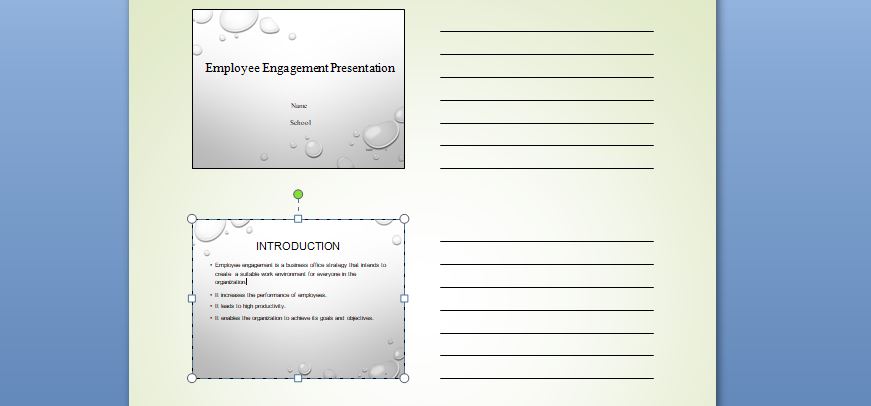Create Effective Handouts
Create Effective Handouts
Audiences and presenters often benefit from handouts—documents distributed to the audience during or after a presentation. Making handouts of presentation slides is very convenient. Standard formats include slide miniatures and slides with “notes” pages. However, your presentation may benefit from other types of handouts. For example, if you are making a detailed sales presentation or client proposal, your handout may include product specification sheets or spreadsheets that would be too detailed to read on a screen. Providing that material in a handout is more effective. If you have several resources to share—such as forms, sample designs, or documentation—you can use folders, report covers, or binders to organize your handout materials. Figure 11.25 provides advice for choosing among types of handouts.
When creating handouts, follow these guidelines:
Consider the needs of your audience. Will they want to make notes on your handouts? If so, avoid slide miniatures that fill the entire page with no room for notes. Be sure to leave ample margins or provide other blank space.
Consider the impact of color. Your audience may perceive handouts printed in color as having more impact than black-and-white documents. However, colorful handouts are more expensive to produce. Printing handouts in grayscale provides contrast without additional expense.
Proofread carefully before copying. You can easily make changes to your electronic files before your presentation. However, if you find an error after you copy handouts, printing and recopying them will require extra time and money.
Make extra copies. Even if you think you know how large your audience will be, make 10 percent more handouts in case extra people attend or someone wants to share copies with colleagues who cannot attend your presentation.
Decide when to distribute your handouts. In some situations, you may want to distribute your handouts as your audience enters the room. They can preview the topic and begin to think about your information before the presentation begins. In other cases, you may want to distribute the handouts as you begin speaking. Having handouts during the presentation allows the audience to make notes and identify question areas as they follow along. If you do not want your audience to read a handout while you are presenting, you may decide to provide handouts only at the end of the presentation.
untitled_document_15 Employee Engagement Employee Engagement Case Study Employee Engagement Case Study
Answer preview Create Effective Handouts
5 slides

